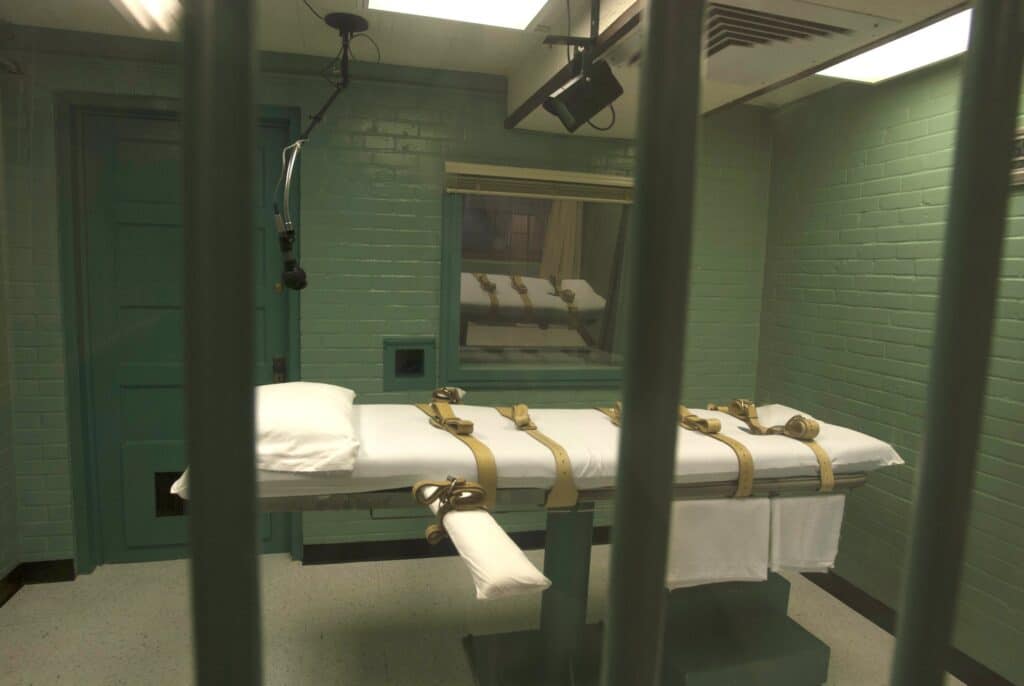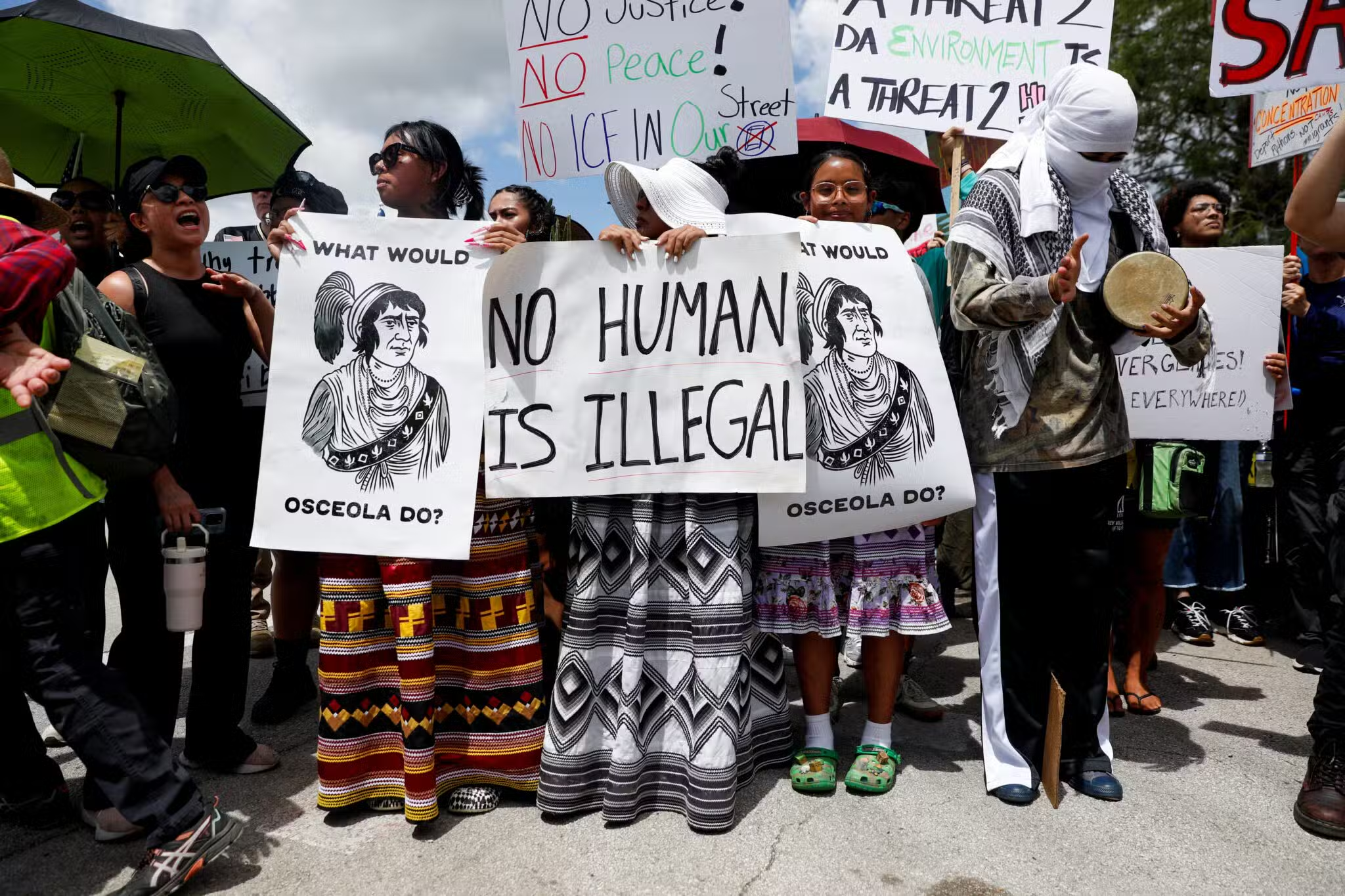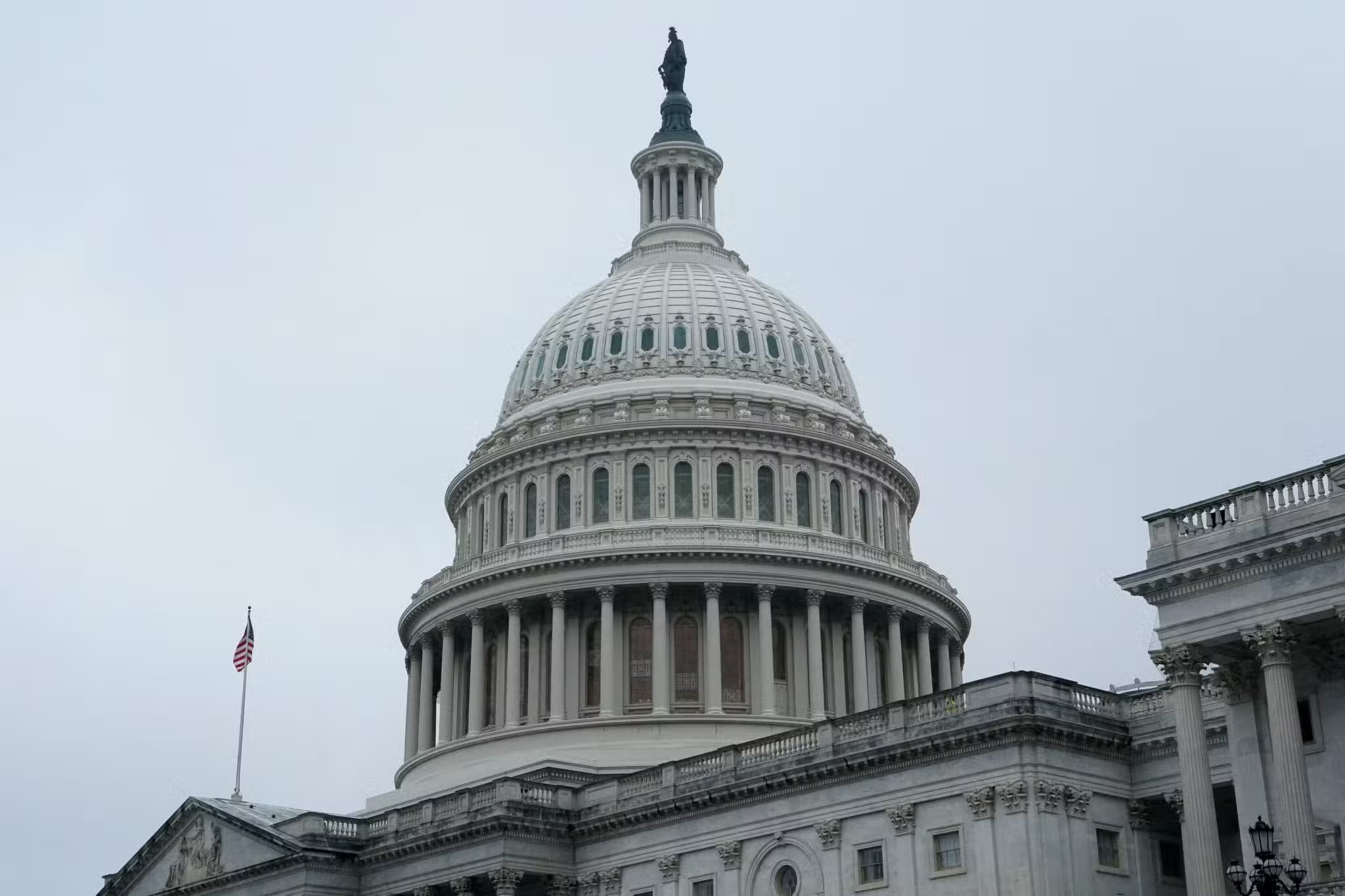Many argue the death penalty can help survivors move on with their lives. However, this counselor writes that true healing can happen only when we learn to “walk with the pain.”
The death penalty has been with us for millennia. If you take the time to read the Old Testament, you will find that the death penalty was widely accepted. We find in the words of Exodus the justification invoked to this day to defend the use of executions: “You shall give life for life, eye for eye, tooth for tooth, hand for hand, foot for foot, burn for burn, wound for wound, stripe for stripe” (21:23‚ 25).
This is known as Mosaic law and is an integral part of our legal system. And yet Jesus came to challenge it: “You have heard that it was said, ‘An eye for an eye and a tooth for a tooth.’ But I say to you, offer no resistance to one who is evil. When someone strikes you on [your] right cheek, turn the other one to him as well” (Mt 5:38, 39).
What a truly radical notion! In the Old Testament, one sees that violence was a way of life, and execution was a primary tool for meting out justice. But Jesus sweeps that all away.
As with many things Jesus said, excuses have been made and qualifiers added: Love your enemy . . . except when he is a murderer. Then you are justified to kill him, a conclusion that sounds very much like Mosaic law.
Desire for Vengeance Is Real
On the other hand, even if we accept Jesus’ teaching, turning the other cheek is not that simple. I can’t simply say, “Well, Patterson, you claim to be a Christian, so you must love your enemy and oppose the death penalty.” I also understand the desire for vengeance.
Some years ago when I was an Army psychologist, I was tasked with evaluating a man arrested for beating his 3-month-old stepdaughter within an inch of her life on Christmas Eve. It had already been determined that the child suffered irreversible brain damage. As I was interviewing the man, I received a call from the pediatric ICU informing me she had also been blinded. I hung up and told this man that news. He shrugged his shoulders and said, “Oh, well.”
In that moment, I wanted to jump across my desk, grab him by the throat, and beat him within an inch of his life! As I think about him almost 40 years later, I have the same feeling. I am not proud of that, but it also helps me to be sensitive to the feelings of survivors when it comes to discussions of the death penalty. It reminds me to be sensitive to survivors’ need for justice and, possibly, vengeance.
To forgive means I also have to face all my rage and anger, all my thoughts of vengeance. We can’t sidestep the emotions.”
Many justifications for executions set aside the language of Mosaic law and focus on possible benefits for the surviving family. One doesn’t so much hear the word vengeance in such discussions, but one does hear the word closure. A common justification for the death penalty is that it provides closure for the family.
When Boston Marathon bomber Dzhokhar Tsarnaev was sentenced to death, the mayor of Boston expressed the hope that “this verdict provides a small amount of closure. ” Similarly, when the decision was made to allow survivors of the Oklahoma City bombing to witness the execution of Timothy McVeigh, Attorney General John Ashcroft stated that he hoped the execution would help survivors “meet their need to close this chapter in their lives.”
Whether executions provide closure depends on what we mean by that word. For most of us, closure implies a completion or conclusion. When a corporation announces store closures, that means those stores are no longer operational. So, in discussing the process of grief and trauma, closure would seem to imply a conclusion—the suggestion that there is an end point to grieving.
This expectation of closure is sometimes supported within a person’s social network. At this time, I am counseling several parents of children who committed suicide. All have commented on encountering, either directly or indirectly, the message “Aren’t you over it by now?”
Think for a moment of the people in your life you have lost. Are you no longer grieving? If I think of loved ones who are gone, I become aware that I may be grieving those losses for the rest of my days. My grief may not be as intense as it was at the time of the loss. But reminders of someone’s absence in my life help me see that grief goes on, that there is no closure in the sense of conclusion to my grief. There’s no point at which I dust myself off and say, “OK, I’m done missing that person.”
The Myth of Closure
In her book Closure: The Rush to End Grief and What It Costs Us, Professor Nancy Berns makes the compelling argument that the concept of closure has emerged within a political context to justify the death penalty and as a “made-up concept: a frame used to explain how we respond to loss.” It has become such a common word in discussions about grief that people assume it exists and is within their reach. In fact, its prevalence reflects the hope we all have that we can heal from the devastation of tragedy and trauma.
For some, closure means the conclusion to a very public process of crime, arrest, trial, and multiple appeals. Anecdotal evidence suggests that indeed the execution provides that sense of closure. But the word closure also implies healing and completion. Evidence suggests that not only does the death penalty not facilitate healing but, in fact, may interfere with it.
In his 2007 study of families of murder victims, Scott Velum found that only 2.5 percent indicated a strong sense of closure resulted from the execution of the murderer. A study published in the Marquette Law Review compared survivors’ reactions in Minnesota and Texas. Killers in Minnesota were sentenced to life imprisonment, an outcome that was experienced as satisfying by survivors. Texas survivors were less satisfied by death penalty verdicts, in large part because of the prolonged appeals process.
As Bill and Denise Richards, parents of a 9-year-old boy killed in the Boston Marathon bombings, wrote in the Boston Globe, asking that the government not seek the death penalty, “The continued pursuit of that punishment could bring years of appeals and prolong the most painful day of our lives.”
Jody Madeira worked with and studied survivors of the Oklahoma City bombings. In her book Killing McVeigh: The Death Penalty and the Myth of Closure, she noted that Timothy McVeigh’s execution did not provide the kind of closure some survivors may have hoped for. As one survivor noted, “There won’t be closure till I am dead.”
The Path to Healing
Are survivors then simply left in anguish, or is some form of healing possible? Perhaps rather than talking about closure, we should be talking about healing.
Sociologist Loren Toussaint suggests that healing is possible through the process of forgiveness. Madeira agrees that forgiveness can help but argues that it is not the only path to healing. This is a delicate topic that must be approached carefully and without judgment. Forgiveness can indeed help survivors heal, but it isn’t that simple. Forgiveness is a process, one that can last a lifetime.
First, let’s be clear on what forgiveness isn’t. Forgiveness does not mean condoning—a distinction relevant to people dealing with someone on death row. Forgiveness does not minimize what was done. The bombings in Boston will never be acceptable. The 9/11 attacks can never be dismissed in terms of the personal trauma. The murder of a loved one will never be OK. After all, the God of my understanding is indeed a God of mercy, but also a God of justice.
Then there is the common phrase forgive and forget. Not only is that often not possible, but in some cases it’s not a good idea. If someone has assaulted me, I may need to forgive that person, but it may not be a good idea for me to invite him or her over for dinner. That person may have no remorse and might assault me again.

The first step in forgiving is making the decision to forgive. The important thing to realize in making this decision is that the person who will benefit most from forgiving is the forgiver. Forgiving frees the forgiver from all the negative venom of hatred and resentment. Essentially, to forgive is to reclaim power from the forgiven. Professor Madeira quotes Oklahoma City bombing survivor Bud Welch as saying about forgiving Timothy McVeigh: “I was the one that got relief from all this pain . . . and it wasn’t about McVeigh.”
Sometimes we confuse forgiveness with reconnecting with someone in a loving way. That reconnecting is a decision that I may make after I have forgiven. I also have the option of not having the offender in my life. In other words, to forgive doesn’t necessarily mean to reconcile with someone.
To forgive means I also have to face all my rage and anger, all my thoughts of vengeance. We can’t sidestep the emotions. I have sat with some people who experienced tragedy or trauma and afterwards stated, rather flatly, “I’ve forgiven that person,” without any acknowledgment of the pain inflicted by that person. This to me is an intellectual exercise, not an experience of true forgiveness.
Learning to Walk with the Pain
In exploring alternatives to the prevalent concept of closure, we also need to broaden our understanding of grief. The concept of closure may have its roots in Elisabeth K√ºbler-Ross’ famous five stages of dying. That theory has been broadened to include grief. The fifth stage is acceptance. Like closure, this notion has many meanings.
What does it mean to accept the death of a loved one? Again, some kind of finality is suggested, a sort of conclusion to the grieving. I have sat with persons who judged themselves because they did not feel they were finished grieving. Others had well-meaning friends and relatives suggest they should be “over it by now ” or that they hadn’t “accepted” the death because they were still grieving.
Over the years I have dealt with many people who came to see me because someone else was concerned about them or, more often, because they themselves questioned whether they were grieving correctly.
I recall one beautiful woman who came to see me after the death of her husband of 50-plus years. She was concerned whether she was grieving correctly. She stated that well-meaning friends had given her a stack of books on grieving. Not wanting to disappoint anyone, she read them all. When I asked what she thought after all that reading, she told me: “I’m completely confused. They contradict one another.”
Forgiveness does not mean condoning. Forgiveness does not minimize what was done.
So what did I do? I gave her a book to read! Only it wasn’t an edition of Grieving for Dummies. It was C.S. Lewis’ A Grief Observed, his journal written the first year after the death of his beloved wife, Joy. The book has no easy answers, and, at its conclusion, it is clear that Lewis will continue to grieve. There is no nice, clean ending. No closure. Only Lewis trying to learn to walk with the pain.
In dealing with losses in my own life, what works for me is to view grieving as a process of learning to walk with the pain. This suggests that, because of a particular loss, my life is changed forever. I am challenged to find a way to move forward living my life as well as possible while at the same time carrying the loss. This is especially true for those who’ve lost a loved one through some criminal act, be it murder or terrorism.
To learn to walk with the pain has several facets. One is to make the decision not to let the trauma define the loved one’s life. It is to affirm that I will not be known as the parent of that girl or boy who was murdered. Rather, I will be known as the parent of a child who touched lives in a beautiful way before leaving life much too soon.
Another facet of walking with the pain is to facilitate the loved one’s legacy. Such legacies may take the form of charitable donations or even the establishment of a charity. Others might establish a scholarship fund. Some get tattoos or plant trees. Such actions don’t make pain go away, but they create a legacy that has some meaning.
For me, acceptance means acknowledging that life is now different, and that I will be walking with this pain until I meet my loved one again in a better place. That may be the only real closure.








